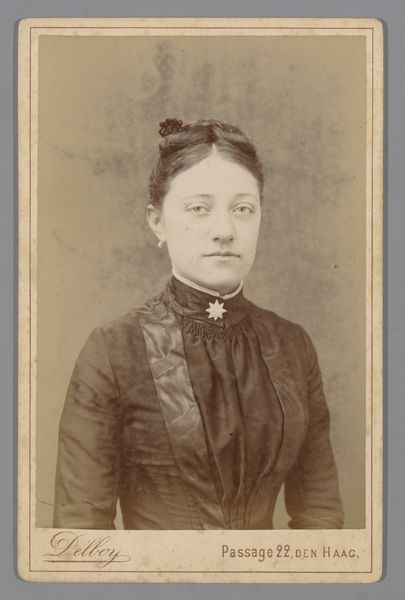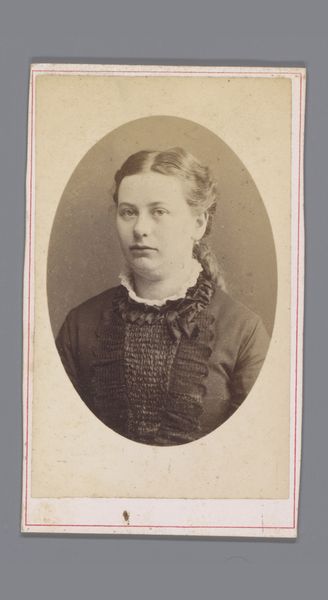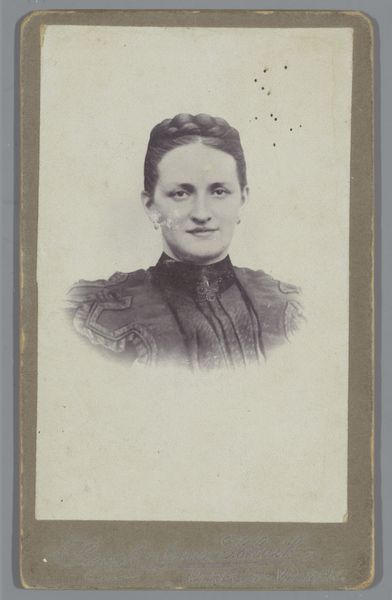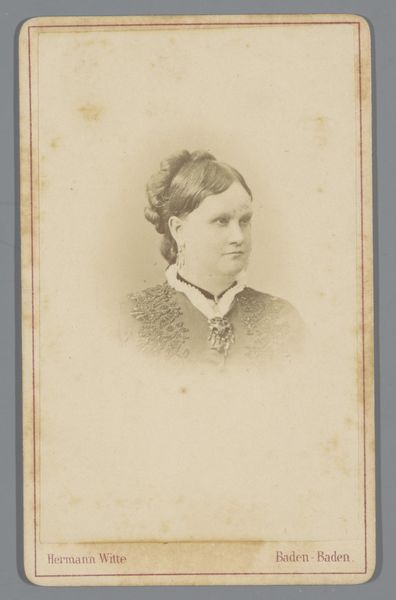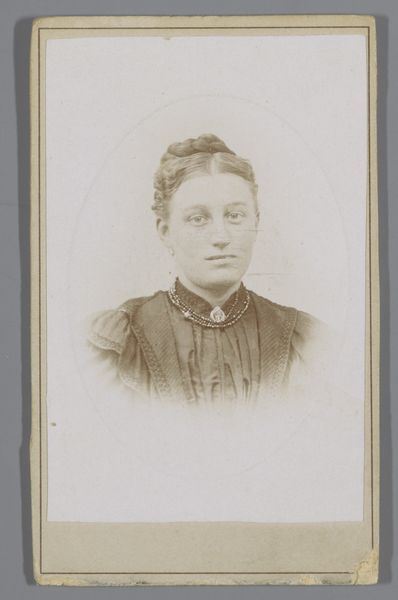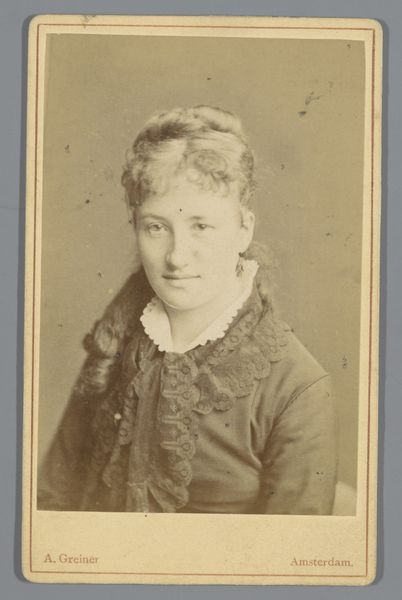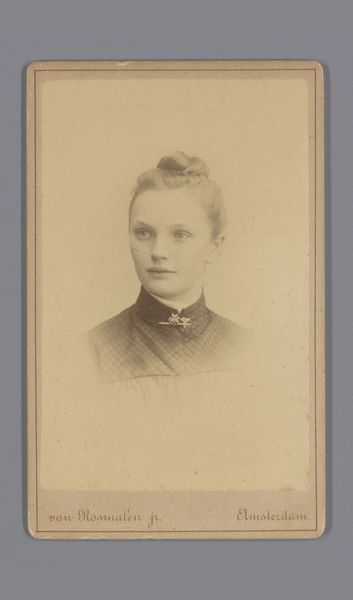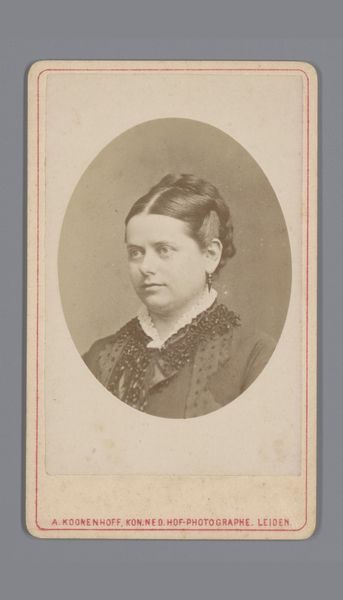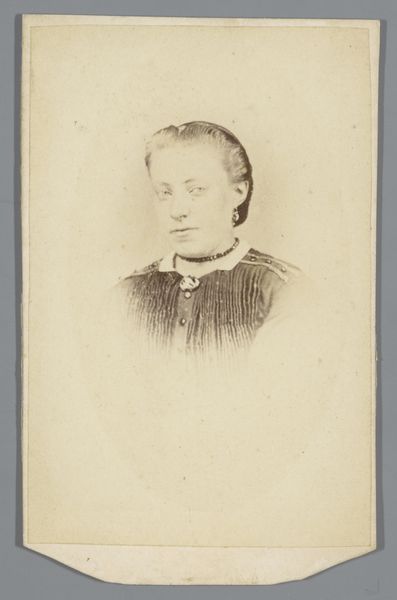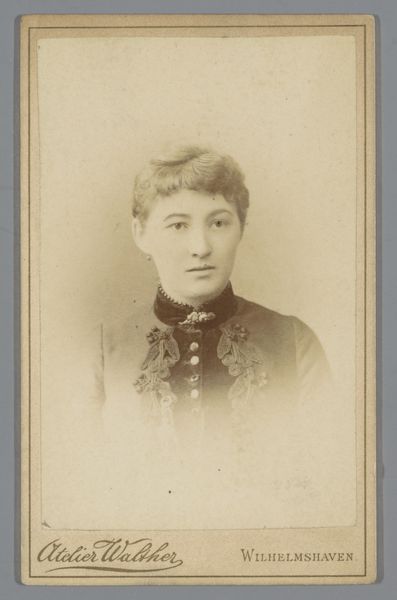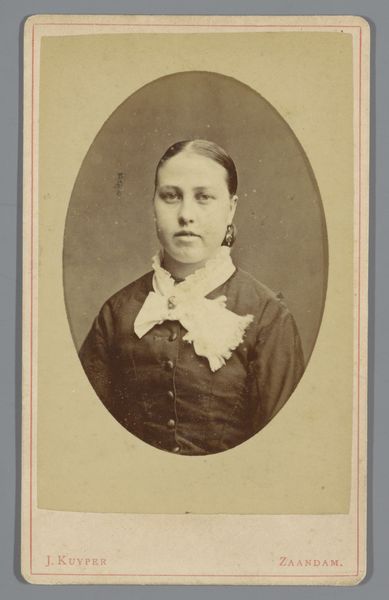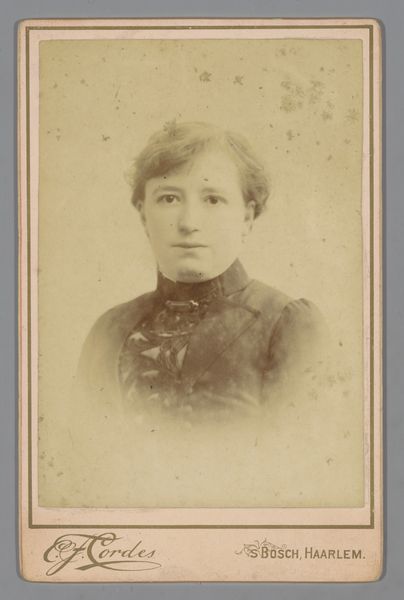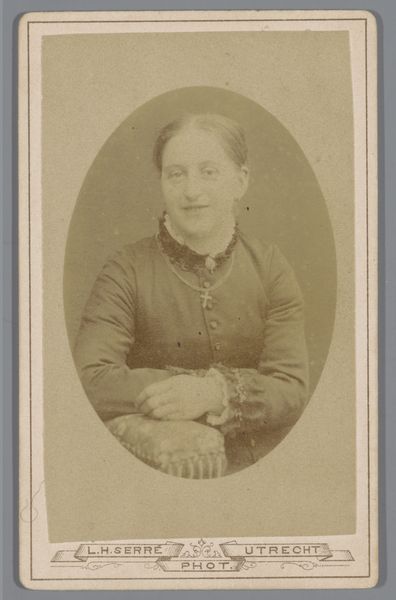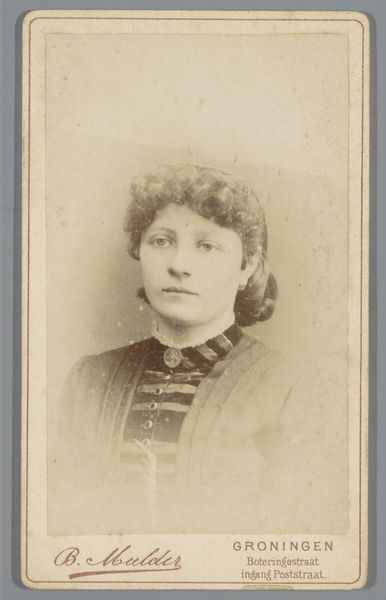
Portret van een onbekende vrouw, aangeduid als Jo de Vries of mevrouw Grommers 1887 - 1896
0:00
0:00
photography, gelatin-silver-print
#
portrait
#
historical design
#
photography
#
historical fashion
#
gelatin-silver-print
#
paper medium
Dimensions: height 103 mm, width 64 mm
Copyright: Rijks Museum: Open Domain
Curator: This gelatin-silver print, titled "Portret van een onbekende vrouw, aangeduid als Jo de Vries of mevrouw Grommers" comes to us from the lens of Godfried de Jong, sometime between 1887 and 1896. Editor: There's such a somber air to it. The light's so soft, almost obscuring the subject. It makes me wonder what kind of paper was used; it seems very matte and absorbs light, adding to the melancholic tone. Curator: That's an interesting observation. I think it speaks to the formal nature of portraiture in that era. Photography was becoming increasingly accessible, and carte-de-visite portraits like these became quite popular. It offered a burgeoning middle class a means of projecting status. Editor: But isn't the real value here in the object itself? This wasn’t mass produced like a newspaper; it's a single image painstakingly created using specific chemicals and a certain printing process. It exists as a discrete, valuable item, whether it shows royalty or a commoner. Curator: I understand the appreciation of the physical, and this aesthetic fits neatly within late nineteenth-century conventions. The subdued clothing, for instance, reflected societal norms around modesty and restrained displays of wealth. Think about how it contrasts with, say, portraits of wealthy families during the Renaissance. Editor: And thinking about the materials - the silver gelatin on paper; this speaks volumes of the labor and access required to create the artwork. From manufacturing to its accessibility in middle class portraiture. What are we meant to gather? It's like trying to find one's self using only industrial processes and materials! Curator: In that era of profound shifts in society—industrial revolution and democratization—the very act of having one's likeness preserved democratized image-making. Now more than ever before common people had more say on what's visible. The portrait embodies this changing social fabric. Editor: Absolutely. It makes you think about the economic role these photographers played and the subjects, their desires, and the actual work behind these processes, the labor and skill involved in achieving that delicate balance in capturing it and creating what looks "realistic" for a photographic moment, almost a piece of jewelry. Curator: That's true. These images are artifacts of complex socio-economic dynamics and it's clear from the print's materiality alone. It all matters. Editor: Agreed, by exploring the material qualities of it, it also opens pathways for broader understandings. It all matters indeed.
Comments
No comments
Be the first to comment and join the conversation on the ultimate creative platform.
